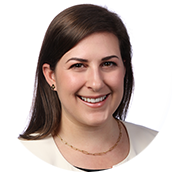Another Win for PREVENT, This Time in Older Adults
The tool is less apt to overestimate ASCVD risk than the pooled cohort equations and in turn could reduce overtreatment.

Among older adults without atherosclerotic cardiovascular disease (ASCVD), the PREVENT risk assessment tool outperforms the pooled cohort equations (PCE) in more accurately predicting primary CV events, according to post hoc data from the ASPREE randomized trial and extended follow-up.
The PREVENT calculator was better at discriminating who will and won’t have an event, investigators say, and less prone to overestimating risk, even for those 80 years and older.
“The PCE consistently predicted event rates that were substantially higher than the observed rate, whereas the degree of overestimation was far less for PREVENT,” Michelle A. Fravel, PharmD (The University of Iowa, Iowa City), and colleagues report in a paper published online last week in Circulation: Cardiovascular Quality and Outcomes. “The accuracy of ASCVD risk prediction is critical given the significant implication of risk estimates on treatment decisions.”
The American Heart Association’s Predicting Risk of CVD Events (PREVENT) tool, released in 2023, replaces the older PCE and can be used to predict the 10- and 30-year risk of ASCVD in patients as young as 30. Prior research has shown the tool’s effectiveness in predicting CV mortality as well as the risk of heart failure, and notably, using it may lead to fewer patients needing statins and/or antihypertensive medications. Data have been limited regarding its accuracy in older adults, however, especially since it was developed with patients aged 79 and younger.
“Although the decreased use of preventive therapies may raise concern about undertreatment and increased event rates, our study confirms that the lower risk predicted with PREVENT is indeed associated with a lower number of actual observed ASCVD events in a large representative sample of community-dwelling older adults,” the researchers write. Fully 20% of the patients in their study were reclassified from intermediate/high risk to low risk when using the PREVENT tool rather than the PCE.
“The opportunity to avoid overtreatment in this population using the new PREVENT risk equation is an important potential advantage to acknowledge,” they add, arguing that the newer tool be used in clinical practice.
Better Prediction With PREVENT
The analysis is based on 15,510 adults aged 65 to 79 years (median age 73.2 years; 56.1% women) and 2,787 adults aged at least 80 years (median age 82.6 years; 59.2% women) from the US and Australia enrolled in the ASPREE trial and its extended follow-up study. Median follow-up was 8.3 and 7.4 years for the groups, respectively, over which 1,084 and 355 ASCVD events were reported.
Overall, the median 10-year risk of ASCVD events—a composite including nonfatal MI, coronary heart disease death, and fatal or nonfatal stroke—predicted by PREVENT was 10% compared with 24% using the PCE. The predicted event rate, when compared with the observed event rate, was 1.3% higher with PREVENT versus 13.0% higher with the PCE. The PCE overestimated the risk of ASCVD in variety of subgroups, including those stratified by sex, country (US vs Australia), and race.
The PREVENT equation more accurately predicted the number of events in both the 65-79 group (1,290 vs 3,102; C statistic 0.793 vs 0.740; P < 0.001) and the ≥ 80 group (350 vs 1,067; C statistic 0.854 vs 0.799; P < 0.001).
Age has been a limiting factor for many risk scores, not just for ASCVD, said Abdulla A. Damluji, MD, PhD (Cleveland Clinic, OH). “If you put the age of 75 into both the TIMI and GRACE risk scores, it’ll give you the highest risk right away,” he told TCTMD. Being able to use PREVENT with older patients is a “major advancement.”
PREVENT should replace the PCE in older adults, according to Damluji, but it could be even further refined to reflect the heterogeneity of that age group.
“There [can be] one older patient who’s 80 years old and has traditional risk factors, and there’s another person who’s 70 and also has the same traditional risk factors, but this person is frail, sarcopenic, has low muscle mass, and mild dementia,” he said. “The risk of that second person who’s younger is much higher than the risk of the first person who’s older, and both of them have the same cardiovascular risk factors. These risk calculators don’t account for these geriatric conditions, and that’s where I think there’s room for improvement.”
That said, risk scores need to be simple and easy to use for busy clinicians.
“We don’t want to add like 90 variables to the model so that we are so accurate,” Damluji said. “But at the same time, you have to have some level of reflection of the older adult population from the conditions they suffer from, and we call geriatric syndromes.”
Yael L. Maxwell is Senior Medical Journalist for TCTMD and Section Editor of TCTMD's Fellows Forum. She served as the inaugural…
Read Full BioSources
Fravel MA, Ernst ME, Woods RL, et al. Performance of the American Heart Association PREVENT cardiovascular risk equations in older adults. Circ Cardiovasc Qual Outcomes. 2025;18:e011719.
Disclosures
- Fravel and Damluji report no relevant conflicts of interest.





Comments